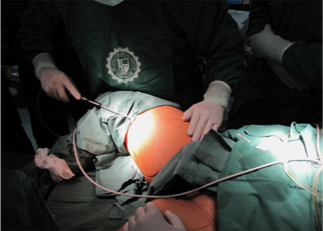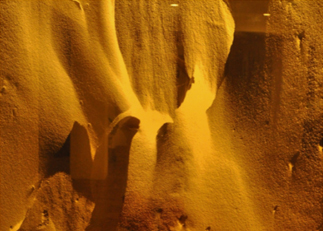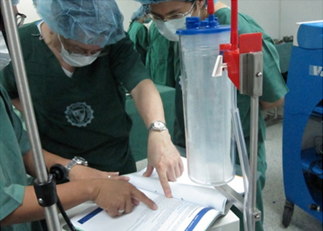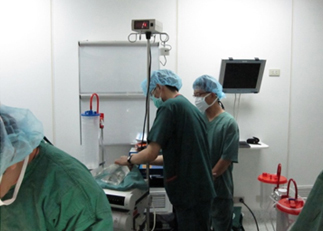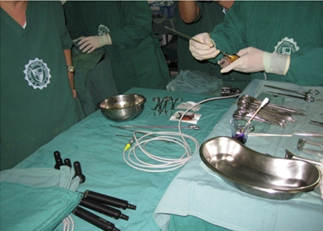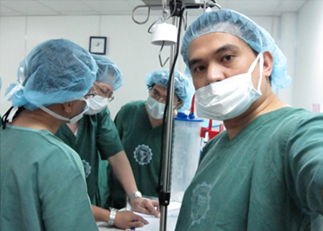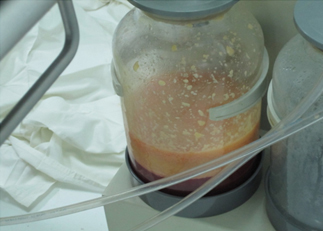Marlon O. Lajo, M.D., FPAPRAS
Aesthetic Surgery Center- St. Luke’s Medical Center
Liposuction
– Most sought after cosmetic surgeries performed by certified plastic surgeons
– Localized fat deposits(LFD) are removed
– Best results are obtained if with elastic skin
Liposuction has been refined through the years and is quite safe.
– usually performed in a day surgery
Introduction of techniques;
– Tumescent and superwet
– Ultrasonic liposuction
– Laser assisted liposuction
> removal of large volume of fat with less blood loss, has become easier and safer
Complications
Minor
– Aesthetic contour irregularities
– Prolonged swelling
– Scar tissue formation
– Minor wound healing problems
– Seromas
– Sensory changes/ discomfort
– Hyperchromia
– Blistering of the skin
Major
– Pulmonary embolus
– Deep venous thrombosis
– Major infection
– Penetration injuries
– Skin or soft tissue necrosis
– Bleeding
– Pulmonary edema
– Hypovolemic shock
– Fat emboli
– Drug toxicity
– Unplanned blood transfusion
– Mortality
Liposuction can be performed safely if certain guidelines are followed.
Increasing number of potential patients makes it relatively easy for inadequately trained or inexperienced physician to encounter disastrous complication or even death.
To minimize the risk of death and disastrous complication during liposuction, these pillars of safety must be strictly followed.
5 Pillars of Safe Liposuction
1. Safe Surgeon
2. Safe Anesthesiologist
3. Safe Facility
4. Safe Co-worker
5. Safe Patient
Deviation from any one of these pillars can lead to serious complications or death of the patient
Safe Surgeon
– Properly trained and educatedin liposuction technique
– Has a thorough understanding of the physiologic implications of infusing and suctioning large amounts of fluids from the body (fluid status determination )
(hemodynamic parameters return 20hrs)
– Must have a complete understanding of the procedure
– Physiology of fluid infusion and removal
– Must be well trained to handle preoperative, perioperative, or postoperative problems
– Must have thorough evaluation of the patient prior to surgery
– ( ASA class I, ASA class II )
Safe Facility
– Must be completely equipped to deal with any problem or complication that may occur during or after the procedure
– Should be certified and accredited by a nationally recognized surgery accreditation body
Safe Co-worker
– Staff working in the operating room and recovery room should be thoroughly trained and familiar with the procedure , care , and recovery of the patient…
– Overnight care should be readily available for all patients
( although these are not necessary for everyone)
> overnight(24hr) observation for large volume liposuction and to patients with underlying medical problems
Safe Patient
– Must be selected appropriately for the procedure
– ASA class I, ASA class II
– Weight should be stable or decreasing with diet and exercise( most overweight pts are not good candidates, >26 BMI)
– Must have reasonable goals and expectations
– OTC and diet meds should be discontinued for 2-3 weeks prior
– Patients with body dysmhorphic disorder or eating disoders should be avoided
> following all the principles of safe liposuction, minor and major complications can be minimized
In addition to these principles, several other issues must be considered;
– Frequent communication of the surgical team
– For large volume liposuction, use superwet technique instead of tumescent technique
– Avoid lidocaine toxicity(not exceed 35mg/kg)
– Compressive postop garments
– Core body temperature is maintained by warming/ heating blankets, using warmed wetting solution
– When in doubt, consider staging liposuction procedure
– Use of compression devices even in the recovery, or overnight if admitted
– Identify and mark asymmetries preoperatively
– Keep accurate intraoperative data of volume infused and aspirated
– Perform pinch test at the beginning, during and the completion of the procedure
Reminder :

